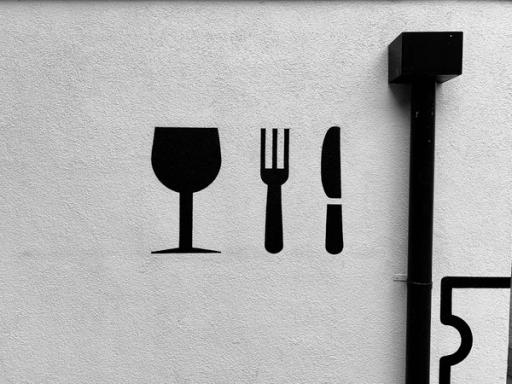
In the world of nutrition, there are two main approaches to tracking food intake: counting macros and calories. While both methods can help you reach your goals, they differ significantly. For instance, counting calories reduces food to a single number, the total calorie content. In contrast, counting macros focuses on the three macronutrients, carbohydrates, proteins, and fats, that make up the calories in food. Though macros and calories can contribute to weight loss, they impact your body differently. That's why choosing an approach that aligns with your goals and preferences can be helpful. This article will explore the differences between counting macros and calories to help you make an informed decision for your health journey. We will also touch upon "how to hit your macros?".
Calorie tracking, like the one offered by Cal AI's calorie tracker, can help you achieve your health goals, whether you are losing weight, gaining muscle, or improving your nutrition. In this article, we'll discuss the benefits of counting macros and calories and how to switch between the two.

Tracking macros and counting calories are not the same thing. While they both involve tracking calories, the main difference is that calorie counting focuses on calories alone, while tracking macros zeroes in on the composition of those calories. When tracking macros, you look at how many carbohydrates, fat, and protein are in your food.
This approach can help you meet specific health goals and support body composition improvements. Counting calories can help you lose weight, but it doesn’t take into account the types of foods that help or hinder your progress.
Macronutrients, or macros, are the three nutrients that give your body energy. Carbohydrates, fat, and protein. “Most people don’t want just to lose weight,” says Sarah Alsing, RD, owner of Delightfully Fueled in Orange, California. “They want to lose fat and be leaner. You must monitor your calorie intake and eat the right foods. Counting macros is a method to guide you to eat enough protein and get a balance of carbohydrates and fat.”
Aligning Diet with USDA Recommendations
The Dietary Guidelines for Americans from the U.S. Department of Agriculture recommends that 45 to 65 percent of your daily calories come from carbohydrates, 20 to 35 percent from fat, and 10 to 35 percent from protein.
Your exact numbers will vary depending on activity level, age, and gender, but this is a good starting point for anybody looking to begin tracking macros.
On the other hand, calories are a unit of measurement of the energy in food. You’ll need to burn more calories than you consume to lose weight. This is called a calorie deficit. “In order for weight loss to occur, you need to be in a calorie deficit, but that number will vary from person to person,” says Umo Callins, RDN, a sports dietitian and fitness coach at Well Rooted Health and Nutrition in Oklahoma City.
Callins recommends working with a registered dietitian nutritionist (RDN) to calculate your daily needs.
“When you are counting macros, you are focusing on hitting a target amount of protein, fats, and carbohydrates in your diet daily,” she says. “When counting calories, your focus is on a set calorie target, which may come from a varied quantity of fat, protein, and carbohydrates in your diet that can change daily.”
You can meet with an RDN, who will calculate your macros. Some online calculators can estimate how many fats, carbs, and proteins you should eat daily for weight loss. For example, the Lose It! app offers ways to set and track personalized macronutrient goals. The amount of macronutrients your body needs can vary significantly from person to person, depending on various factors, including:
According to the Dietary Guidelines for Americans, a good starting point is to fill half your plate with fruits and veggies, a quarter with lean protein, and a quarter with healthy complex carbs like baked sweet potatoes or brown rice.
A qualified RDN can help calculate the correct amount of calories for you to eat to be in a deficit. The Lose It! app (and other online tools) also offers ways to get a calorie budget based on age, activity level, weight loss goals, and more. Just be sure you don’t overdo it. According to the Mayo Clinic, by cutting 500 calories daily, most people will lose roughly ½ to 1 pound weekly.
(Per the National Heart, Lung, and Blood Institute, a safe and realistic rate of weight loss is 1 to 2 pounds per week.) Anything beyond this could wind up creating unhealthy habits and even backfire and cause you to regain some or all of the weight you worked so hard to lose in the first place.

You must create a calorie deficit to lose weight, or more specifically, lose fat. When the calories you consume via food and beverage exceed the calories expended via total metabolism, the body will use stored energy, also known as body fat, for fuel. For fat loss to occur, you must ensure you eat fewer calories than you burn. To count calories for weight loss, you must determine the number of calories you need to consume to create a calorie deficit.
To determine how many calories you need for weight loss or fat loss, you must decide on your daily calorie needs for general health and weight maintenance. Your total daily energy expenditure (TDEE) can be calculated using the Mifflin-St Jeor formula using an online calculator such as tdeecalculator.net (1).
Once you’ve calculated your TDEE, you can determine the size of your calorie deficit (small = 10-15%, medium = 20-25%, significant = 25% or more) to determine your total calorie intake for weight loss.
Put simply:
Once you’ve determined your total calorie needs for weight loss, you can use an app, such as MyFitnessPal or FatSecret, to help you track your calorie intake. To count macros for weight loss, determine how many grams of each macronutrient you consume daily to create a calorie deficit. Once you’ve determined how many calories you need to consume for weight loss, you can evaluate the macronutrient balance of those calories.
While the exact macronutrient balance required may vary from one individual to the next depending on specific sex, age, body weight, activity level, and goals, the United States Department of Agriculture (USDA) and the Food and Nutrition Board of the Institutes of Medicine (IOM) recommend healthy adults consume a macronutrient ratio of (2, 3):
More specifically, should an individual choose to consume a macro balance of 45% carbohydrate, 30% protein, and 25% fat, their macro intake would be calculated by the following steps:
This calculation will provide the exact number of grams of carbohydrates, proteins, and fat required to create a calorie deficit for weight loss.
For example, suppose Sara determines her TDEE is 2,000 calories per day and wants to implement a moderate calorie deficit of 20% (400 calories). In that case, her total daily calorie needs for weight loss are 1,600 calories daily. Based on this calorie deficit, her macro intake would be:
Note: While not a primary or essential nutrient, alcohol is also considered a macronutrient and contains seven calories per gram. Alcohol should be included in tracking methods, whether you are counting calories or macros.
The most significant benefit of counting macros is eliminating the need to cut out entire food groups. Unlike fad diets that have you restrict a wide array of foods, you can eat whatever you want as long as it fits into your macros. Best of all? You can still lose weight and get lean as long as you hit those macronutrient targets.
Researchers who studied 21,942 patients on 14 different diets over six months concluded that participants who followed macronutrient diets experienced modest weight loss. Not only did their scales move in the right direction, but these patients also had substantial improvements in cardiovascular risk factors, particularly blood pressure.
“Tracking macros can be beneficial for weight loss as it guides you to focus on eating enough protein, which can help you lose more fat and prevent muscle loss,” says Alsing. “The foods that make up the calories you eat will affect how you look and your body composition, meaning your muscle mass and fat. You can eat fewer calories and lose weight, but you might lose more muscle than fat if you don’t eat the right foods.” Certain people with specific conditions might also benefit from counting macros instead of calories. “People who take insulin often count the grams of carbs they eat at a meal, so they can match that with their insulin dose,” says Alsing.
“This helps them manage their blood sugar levels to prevent spikes. People with diabetes who take GLP-1 medications may also benefit from counting macros, especially grams of carbs, to help them evenly spread their daily intake to keep blood sugar levels steady.
Eating minimal carbs at breakfast and lunch, then eating a large amount of carbs at dinner, can lead to a drastic spike in blood sugars. Counting macros may also help with meal planning by ensuring they pair carbs with protein and fat to slow the absorption of carbs.”
Here is a list of the drawbacks of tracking macros:
The most significant advantage of counting calories instead of macros is more straightforward. “When you count calories, you are just focused on the total number of calories you eat in a day,” says Alsing.
“Those calories can come from any and all foods. When you count macros, you have to put more thought into the types of foods you eat because you are trying to eat a certain amount of protein, carbohydrates, and fat each day.”
Calorie counting requires less attention to nutrients since you are not tracking the percentage of fat, carbohydrates, or protein you eat each day. You just need to measure your food and read nutrition labels to ensure you aren’t overestimating or underestimating the number of calories consumed.
Nevertheless, reducing calories doesn’t guarantee someone is eating a nutritious diet, as demonstrated in 2010 by the infamous Twinkie Diet. Mark Haub, a professor of human nutrition at Kansas State University, decided to prove to his students that you can lose weight by eating anything as long as you stay in a deficit.
His premise was that calorie counting drives weight loss, not food quality. To make his point, Haub stuck to a 1,800-calorie-a-day calorie budget for 10 weeks but ate Twinkies, Little Debbie snacks, chips, sugary cereals, Oreos, and Doritos rather than healthier, more nutritious foods — and lost a whopping 27 pounds!
“It takes more effort to track macros than calories, especially consistently,” says Callins. “For weight loss, especially initially, I recommend tracking calories because it’s easier. This will likely lead to consistency and be less of a challenge than tracking macros.
Nonetheless, I recommend consuming nutrient-dense foods such as whole grains, fruits, vegetables, and lean protein and having consistent meal and snack timing.”
Tracking macros is also a great way to ensure you’re fueling your body with nutrient-dense foods. After all, eating five Oreos for lunch isn’t the same as eating grilled fish and steamed vegetables, even if they contain the same calories.
The Oreos contain empty calories with very little nutritional value, so you’ll likely still feel unsatisfied (and hungry!) in a few hours.
Here is a list of the drawbacks of counting calories:
So, is it better to count calories or macros for weight loss? The answer, as implied by the Twinkie Diet, isn’t as straightforward as you’d think.
“It’s not just important to count calories or macros,” says Sriram Machineni, MD, an associate professor of medicine at the Albert Einstein College of Medicine and director of the Fleischer Institute Medical Weight Management Center in New York City.
“Any diet reducing calories can cause weight loss, but that won’t necessarily treat obesity because the chances of weight rebound are very high. In my clinic, when people with obesity come in, they’re usually mainly eating ultraprocessed foods, so we switch them to lots of fruits and vegetables.
I would pick macros over calories, but we want to have balance in macros. It’s more about sticking to unprocessed foods. That’s really what’s essential for health regarding the best weight reduction.”
Alsing says, “Counting calories and tracking macros daily can be challenging. Starting your weight loss journey by tracking calories and macros is beneficial, as it can be eye-opening. You might be eating more certain foods than you realize, which can add to calories.
Or maybe you realize you aren’t eating enough protein. Eventually, you’ll get familiar with what foods to eat to hit your protein goal without tracking, and eating balanced meals becomes your routine.”
In the short term, macro counting wins. While counting calories and macros can support a weight loss goal, counting macros has more benefits. In addition to creating a calorie deficit, it can help improve nutrient balance, increase satiety signals, improve body composition, support athletic performance, and support hormone balance. Regardless of your chosen method, prioritize healthy food choices by consuming a balanced diet of lean protein sources, fiber-rich carbohydrates, and healthy fats.

There are two primary approaches to tracking food intake:
While both methods can help you lose weight, they are very different. Counting calories focuses on the number of calories in food, no matter where those calories come from. In contrast, tracking macros requires concentration on protein, fat, and carbohydrates, which can encourage more balanced nutrition.
When you track macros, you’re tracking calories already. So, while you’ll need to eat fewer calories overall, those calories can come from big, satiating meals composed of food you like to eat. That’s because you can eat to your macro targets with any protein-, fat- and carbohydrate-rich foods you want.Here’s an example that sounds better to you. Your day could look like this while you count macros.
Your day might look like this if you’re counting calories:
Both meal plans could produce weight loss if they are calorie deficits for you. Nevertheless, you tell me which would feel more satisfying. Which would better support your active lifestyle? Which would you look forward to eating? Tracking macros puts you in the driver’s seat to build meals and snacks for yourself composed of foods that you love while pursuing your weight loss goal.
Weight loss occurs when you are consistent with your habits. Whichever eating pattern you can consistently stick with is the best for you. So, if a high-fat, low-carbohydrate eating pattern includes the foods you love, and you feel great while eating in this way, your macro prescription could reflect it, and you could lose weight.
If a high carbohydrate, low fat eating pattern supports your lifestyle best, your macro prescription could reflect it, and you could lose weight while following it. Macro prescriptions are unique to the individual and their goals. They can be tailored by nutrition experts like Registered Dietitians who collect details about a person’s health history, hormone status, food preferences, and more to create a highly personalized macro prescription.
To be very direct, no, there is no particular diet or macro prescription that is superior for weight loss. Individuals can craft the best eating pattern from any foods they like to hit their prescribed macronutrient targets.
Cal AI transforms calorie tracking with cutting-edge AI technology. Just snap a photo of your meal, and we'll do the rest.
Our app combines your phone's depth sensor with advanced AI models to:
With 90% accuracy on visible foods and multiple tracking options like:
We've made nutrition tracking effortless. Whether you're scanning a full meal or a quick snack, Cal AI
Our AI learns from your feedback to improve accuracy. It includes personalized insights and smart reminders to keep you on track. Cal AI makes achieving your fitness goals simpler than ever.
Track your calories with your camera using Cal AI's calorie tracker today!